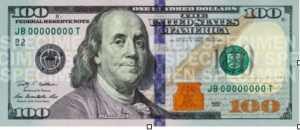Lowering Prices Can Make You a Lot More Money
- At May 26, 2016
- By rbadmin
- In Blog
 0
0
 It’s a hard thing for some businesses to comprehend, but lower prices can bring in a lot more money. Just look at Walmart. Whether you love the company or hate it, there’s no denying that its “always low prices” strategy works. It’s the largest company by revenue in the world.
It’s a hard thing for some businesses to comprehend, but lower prices can bring in a lot more money. Just look at Walmart. Whether you love the company or hate it, there’s no denying that its “always low prices” strategy works. It’s the largest company by revenue in the world.
You have to be careful, though. The lower the price, the lower the perceived value. You wouldn’t buy a smartphone for 99 cents. The thing wouldn’t even work. It would have to be some kind of a scam. Perhaps it’s a dead phone that somebody dropped in the shower and is being sold used as a repurposed paperweight.
The higher the price, the higher the perceived value. What would you think of a smartphone that cost 5,000 dollars? That phone must really be something. The new iPhone probably looks like a 1980s Atari console by comparison. Leonardo DiCaprio probably has one. But we don’t have Leonardo DiCaprio’s budget, so we’re not dropping five grand on a phone, not even if the battery lasts all year on a single charge.
It may be hard to admit this, but you’re generally better off erring by pricing a little too low than a little too high. You’ll move a lot more units while doing little or no damage to the perceived value.
The Marketing MO blog precisely sums up how an elastic demand curve works.
When you raise prices slightly, volume goes down substantially.
When you lower prices slightly, volume goes up substantially.
Of course, you’ll want to make sure a lower price doesn’t obliterate your profit margin. You want to find the sweet spot that yields the most revenue. If you sell more units at a lower price but hardly make any money because the profit margin is miniscule, it’s not worth it. Likewise, if you’re only selling a small number of units because your price is too high, it doesn’t matter if you can drive a tank fleet through your profit margin—you’re not making much money.
Generally, you’ll have to price your products within the normal range of the market unless your product is stratospherically better than the competition’s, but even then you have to be careful. Your would-be customers will compare your prices to everyone else’s if it’s remotely feasible for them to do so. If they’re making a purchasing decision while standing in the aisle at Best Buy or browsing online at Amazon.com, price shopping is no more difficult than moving their eyeballs.
Sean D’Souza at Copyblogger makes a good point. “You want to create a situation where clients have stopped considering the competition and are now choosing from your range of products, services, or courses.”
You can do this easily if you sell directly from your own website. Potential customers will have to take at least a few extra steps before they can price shop. Instead of comparing your product’s prices to those of your competition, they’ll be comparing prices of your products. If you’re selling six different smartphones, or six different whatevers, they’ll ask themselves which of your six products looks like the best deal.
And that’s where the fun begins. You’ll have all kinds of leverage that you can’t have when selling at Best Buy or on Amazon. You might not need to lower your prices at all. By raising the price of one or two products, you’ll make the less expensive ones look like even better deals by comparison. You can’t do that at Best Buy because you can’t control your competition’s prices.
If your demand curve is elastic, however, you still might be better off lowering prices. It can produce shocking results.
When developer Gunnar Bartels dropped the price of his Sharemouse app from 25 dollars to 10 dollars, his sales and profits went through the roof. Techdirt has the details in a case study, but here’s the money quote:
“Holy cow!” Bartels wrote. Translation: He sold more licenses than the elastic pricing model predicted.
He was understandably skeptical and thought the experiment would almost certainly fail, but he gritted his teeth and dropped his price anyway because you never know until you try.
Be brave. Experiment. Keep trying until you find your own sweet spot.
